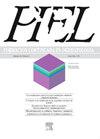Características clínico-epidemiológicas de la alopecia androgenética en pacientes de un hospital de tercer nivel de Trujillo, Perú
Q4 Medicine
引用次数: 0
Abstract
Objective
Androgenetic alopecia (AAG) is the progressive miniaturization of the hair follicle. This disease has an impact on the psychosocial aspect of the affected individuals. The aim of this article was to determine the clinical-epidemiological characteristics of AGA in adult patients in a tertiary hospital in Trujillo during 6 months.
Materials and methods
Prospective descriptive observational study. Data collection forms of patients older than 18 years with a diagnosis of AGA were used to obtain information.
Results
Of a total of 40 patients with AGA, 55% were male and 45% female, mainly aged 31–49 years and with a family history of AGA (72.5%). The typical grade IIIv pattern prevailed in males whose most frequent age range was 31–49 years. The diffuse grade I pattern (25%) predominated in females, who were < 70 years old. The most common disease time was 1–5 years, where the hair pull test was negative, predominantly in females (27.5%) and between 31 and 49 years of age (27.5%).
Conclusions
The majority of patients were 31–39 years old, male and with a family history of AGA; typical grade II and IIIv and diffuse grade I pattern predominated; disease time of 1–5 years and negative hair pull test.
秘鲁特鲁希略一家三级医院雄激素性脱发患者的临床流行病学特征。
目标雄激素性脱发(AAG)是一种毛囊逐渐变小的疾病。这种疾病会对患者的社会心理产生影响。本文旨在确定特鲁希略市一家三级甲等医院 6 个月内成年患者 AGA 的临床流行病学特征。结果 在总共 40 名 AGA 患者中,55% 为男性,45% 为女性,主要年龄在 31-49 岁之间,有 AGA 家族史(72.5%)。典型的 IIIv 级模式主要发生在男性身上,其最常见的年龄范围为 31-49 岁。弥漫性 I 级模式(25%)主要出现在女性身上,她们的年龄在 70 岁左右。最常见的发病时间为 1-5 年,拔毛试验呈阴性,主要是女性(27.5%)和 31-49 岁之间的女性(27.5%)。结论大多数患者年龄在 31-39 岁之间,男性,有 AGA 家族史;以典型的 II 级和 IIIv 级以及弥漫的 I 级模式为主;发病时间为 1-5 年,拔毛试验呈阴性。
本文章由计算机程序翻译,如有差异,请以英文原文为准。
求助全文
约1分钟内获得全文
求助全文
来源期刊

Piel
Medicine-Dermatology
CiteScore
0.10
自引率
0.00%
发文量
179
审稿时长
47 days
期刊介绍:
La mejor revista para incrementar eficazmente sus habilidades diagnósticas y clínicas en dermatología, por la alta calidad de sus imágenes e iconografías, por el prestigio de sus colaboradores y por la actualidad de sus temas. Una publicación de máxima utilidad práctica para Especialistas y Profesionales de Atención Primaria.
 求助内容:
求助内容: 应助结果提醒方式:
应助结果提醒方式:


